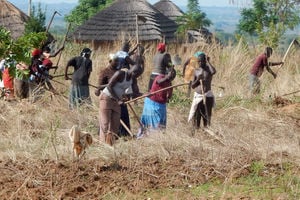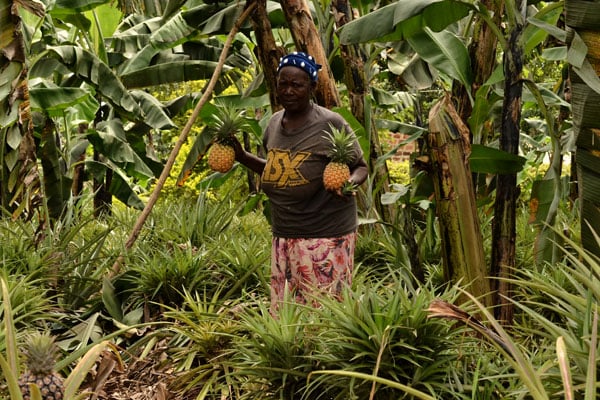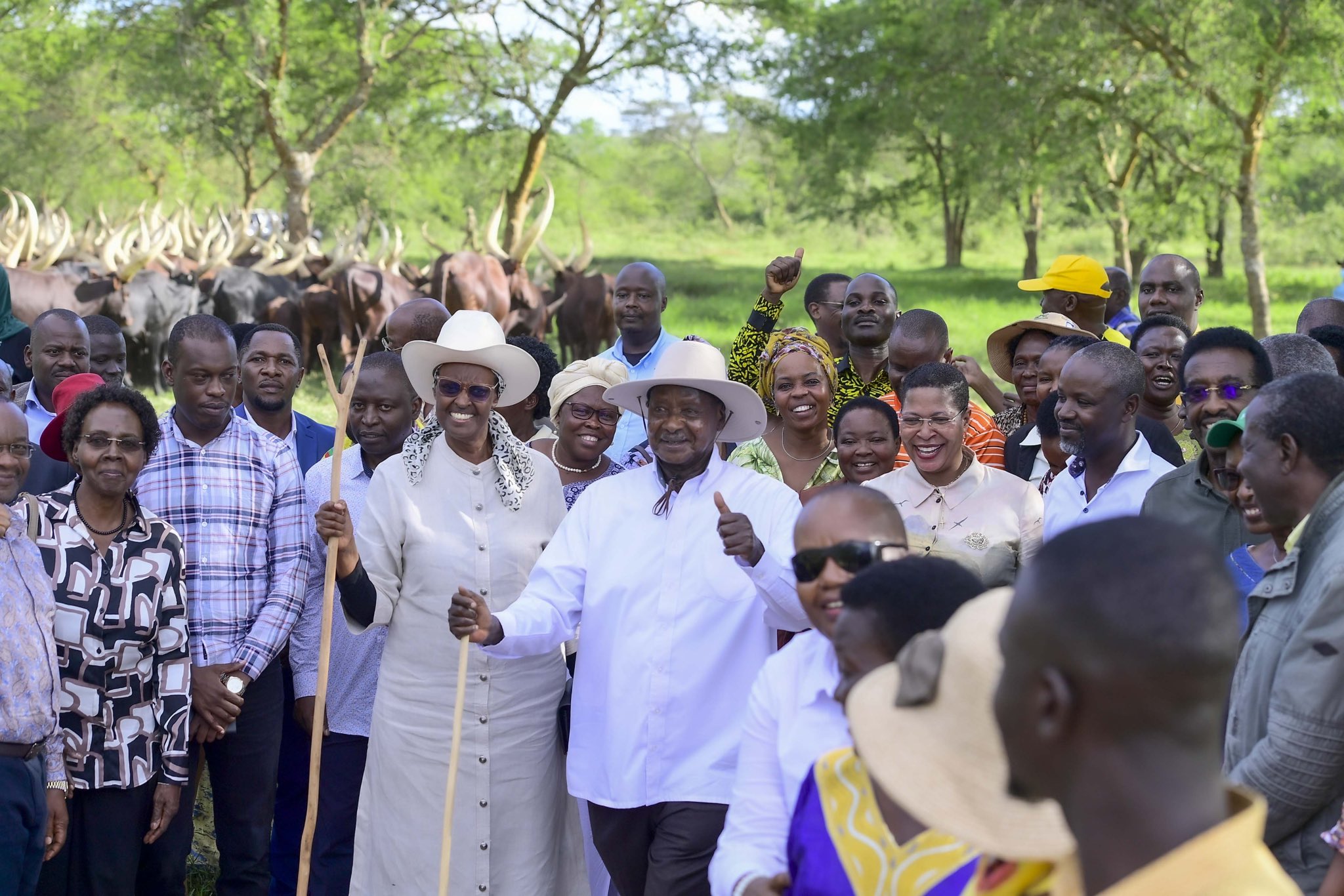
(Left-right) Speaker of Parliament Anita Among, President Museveni, Deputy Speaker Thomas Tayebwa, and Clerk to Parliament Adolf Mwesigye, moments after opening the parliamentary plenary in Gulu City on August 29, 2024. PHOTOs/TOBBIAS JOLLY OWINY
President Museveni yesterday rebuked the Speaker of Parliament, Ms Annet Anita Among, regarding a statement she made earlier that the four-acre model —a poverty alleviation pet project—is not ideal for northern Uganda.
“The four-acre model may not be vital in this area because we have only land. All we need to do is mechanisation, provide some funds in societies, create markets for these products, identify the cash crops to be grown in this area to have a participatory approach to what is being done in the area, and have a microcredit scheme by adopting such programmes of local realities in order to achieve meaning change,” Ms Among said during the regional plenary sitting at Kaunda Grounds on the outskirts of Gulu, which the President attended.
Her remarks were an attempt to underscore what had been expressed earlier on Wednesday by the area MPs who are reluctant to embrace the much-vaunted poverty alleviation programme. But President Museveni, who was piqued by her remarks, accused the Speaker of attempting to deviate from a government alleviation project, which could sow confusion.
“I heard the Speaker of Parliament, don’t bring your new confusion by saying that the four-acre model does not apply here, it does. I don’t agree with that line. In this booklet, I made it clear that the four-acre model was a rescue operation for the parts of the country that had already fragmented land,” Mr Museveni said.
The President who brooks no dissent further said: “Don’t waste our time by bringing confusion here, no, please. There are two strategies, intensive agriculture, which is about the four-acre model that I am talking about, but even if you have 10 [acres], you can use the same, and you will be richer. The other one is extensive agriculture, done on more land.”
According to the President, the success of the four-acre model is dependent on how much a farmer can plant on the land they have.
“That is why I said, since you have very few acres [of land], make sure that the mathematics/planning is correct because, without that, you will never get out of poverty. Even if you have more land, you can plant more—more than four and 10 acres. When you talk about it, I want the mathematics of the average landholding in the north,” he stated.
Mr Museveni, who previously traversed the countryside and appeared on television broadcasts to document the success of model farmers, told lawmakers that the four-acre model, which merges crop and animal husbandry, is the silver bullet to alleviate poverty.
“For the four acres, you can have seven activities: coffee, pastures, fruits each taking an acre, and in the backyard, you put poultry for eggs or piggery for pigs, and if you are near a wetland, you do fish farming, and that can earn our people millions of shillings even on a small acreage,” he said.

MPs during plenary at Kaunda grounds in Gulu City on August 29, 2024
In her remarks before Mr Museveni’s address to Parliament, Ms Among applauded the government’s efforts to develop northern Uganda.
But she argued that whereas there were efforts to roll out poverty alleviation programmes, lawmakers from Acholi had during Wednesday’s plenary claimed that the four-acre model was not ideal for the sub-region.
“Members noted the need to work and ensure the success of the prevailing government development initiatives such as Emyooga,” she said.
Ms Among said she documented the concerns of the area MPs so that they could be addressed by the Head of State for action.
Minister Omona unveils plan to transform North
“All these relate to finances; our work is to find out what is lacking and, at the end of the day, submit to the chief Finance minister, which you are.”
Ms Among spoke candidly and suggested that the region’s post-war marshall plan was curtailed by several factors, including ailing road networks and unemployment, among others.
“There are crosscutting issues that affect their development, notably the [slow] post-war recovery, the high levels of poverty and unemployment, the high influx of refugees, environmental degradation, limited transport infrastructure, heavy reliance on subsistence agriculture, and limited value addition to agricultural output,” Ms Among said.
The Speaker listed the other problems besetting the sub-region including cattle rustling; the lack of health and school facilities; the delayed compensation of war and livestock theft victims, and the lack of compensation for the landless communities who lost communal land during the LRA insurgency.
“The sitting took cognisance of the need to embrace a viable cash crop, livestock agriculture, agricultural mechanisation, value addition, and sustainable organic farming, as well as the need for reliable transport and communication infrastructure as an enabler of growth and development, among others,” the Speaker revealed.
Speaking about the broader challenges of the region, Ms Among said there is a need to rehabilitate the moribund infrastructure including the strategic national road infrastructure notably the Moroto-Kotido-Kabong-Karenga Road, Koboko-Yumbe-Moyo Road, Nebbi-Goli-Paidha Road, Mvara-Vura Road, and Karuma Bridge, a major artery that connects the north to the rest of the country.
However, Mr Museveni said it would be unnecessary to tarmac new roads when the constructed roads are underutilised.
He said:“Because we are talking about roads, etc. There are places where roads are good, for example, the road from Kampala to Gulu. The road is very good. The problem of the bridge is just recent. From Elegu to Kampala, the one from Musingo-Kitgum-Gulu to Kampala, all in a good state. But what are we selling around these roads? I know there is simsim, but what else?”
“We have been telling you and everybody since the 1960s that whatever you do if you want the people to develop, start with their homestead incomes,”President Museveni added.
The regional plenary sittings in Gulu City opened on Tuesday with several field activities, including the Speaker’s visit to the resting place of the former Speaker of Parliament, Jacob Oulanyah, in Omoro County.




